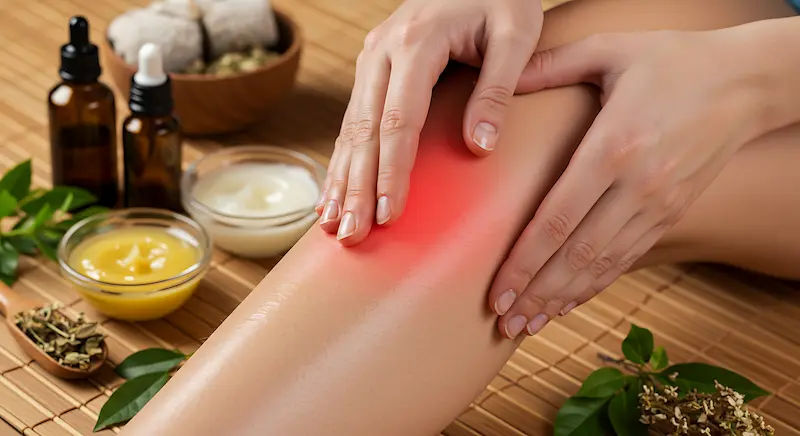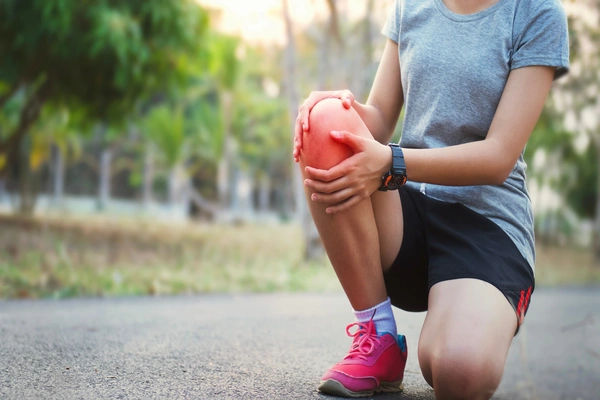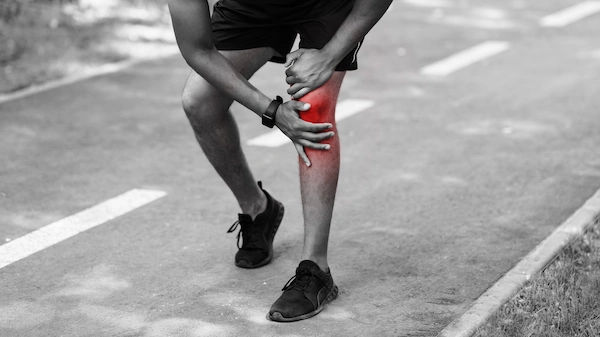A New Ray of Hope: Is Autologous Chondrocyte Implantation Right for Your Knee?
Discover how Autologous Chondrocyte Implantation (ACI) can repair cartilage damage, who it benefits most, recovery timelines, risks, and success rates.

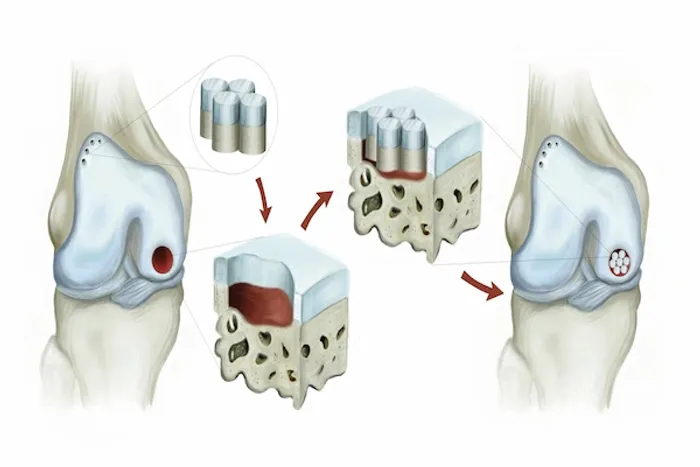
Introduction
Knee pain can be a relentless thief, stealing your ability to run, jump, or even walk without a wince. For active individuals and young patients, a diagnosis of significant cartilage damage can feel particularly devastating, often coming with the grim prognosis of eventual arthritis. But what if your body could grow its own, brand-new cartilage to repair the damage? This isn't science fiction; it's the groundbreaking principle behind Autologous Chondrocyte Implantation (ACI). This advanced biologic procedure offers a powerful solution for repairing isolated cartilage defects, potentially delaying or even preventing the need for a knee replacement. This guide will walk you through everything you need to know about ACI—from how it works and who it's for, to the detailed recovery process and how it compares to other cartilage repair options. We’ll explore whether this innovative procedure could be your key to returning to a pain-free, active life.
What is Autologous Chondrocyte Implantation (ACI)? The Science Explained
Autologous Chondrocyte Implantation, or ACI, is a two-stage surgical procedure that harnesses your body's own cells to regenerate durable, hyaline-like cartilage in the knee. Unlike techniques that simply stimulate a scar tissue response, ACI aims to create a biological replacement that closely mimics your original cartilage. The term "autologous" simply means the cells come from your own body, minimising the risk of rejection. The entire process is a marvel of modern orthopaedics, turning a small sample of healthy cartilage into millions of new, potent cells ready to repair a damaged area.
The goal is to address focal chondral defects—localised areas of wear and tear—that won't heal on their own due to cartilage's lack of blood supply. By filling these defects with living cells, ACI restores the smooth gliding surface of the joint, alleviates pain, reduces swelling, and improves function. It's a joint-preserving surgery designed to maintain your natural knee anatomy and function for as long as possible.
The Two-Stage Surgical Process
Stage 1: Arthroscopy and Cartilage Harvesting
The first stage is a minimally invasive arthroscopic procedure. Your surgeon will insert a small camera into your knee to fully assess the defect—its size, depth, and location. If you are deemed a good candidate for ACI, they will then harvest a small, healthy sample of cartilage (about the size of 2-3 Tic Tacs), typically from a non-weight-bearing area of your knee. This biopsy is then sent to a specialised laboratory.
Stage 2: Implantation and Sealing the New Cells
Over the next 4-6 weeks, the lab technicians isolate the cartilage-forming cells (chondrocytes) from the biopsy and culture them, multiplying them into millions of new cells. The second surgery is an open procedure. Your surgeon will prepare the damaged area by clearing away any unhealthy tissue. They then implant the cultured cells into the defect and cover them with a thin membrane or scaffold, which is sealed to the surrounding healthy cartilage. This membrane creates a protected environment where the new cells can grow, multiply, and mature into healthy repair tissue.
Consult an Orthopeadic Specialist for the best advice
Are You a Candidate for ACI? Who Benefits Most?
Not everyone with knee pain is a candidate for this sophisticated procedure. Ideal candidates are typically younger patients (often under 50-55) who are motivated to return to an active lifestyle and have a specific type of injury. If your condition does not improve after trying conservative methods like physiotherapy, consult an orthopaedic surgeon online with Apollo24|7 for a preliminary assessment of your MRI scans and symptoms.
Ideal Patient Profile for Successful ACI
- Age: Physically active adolescents and adults with many years of active life ahead.
- Defect Size: Symptomatic defects typically larger than 2-4 cm². ACI is particularly valuable for larger defects where other reparative techniques are less effective.
- Joint Health: The rest of the knee joint must be relatively healthy, with intact ligaments, normal alignment, and meniscal function. The opposing cartilage surfaces should be in good condition.
- Lifestyle: Patients who are committed to the lengthy and strict postoperative rehabilitation after chondrocyte implantation.
Conditions Treated by Autologous Chondrocyte Implantation
ACI is primarily used to treat symptomatic focal osteochondral lesions caused by:
- Osteochondritis Dissecans (OCD)
- Acute traumatic injuries (e.g., a fall or direct blow)
- Defects that have failed previous repair attempts (e.g., failed microfracture)
ACI vs. The Alternatives: How Does It Compare?
When considering cartilage repair, it's crucial to understand how ACI stacks up against other surgical options. The best choice depends entirely on your specific injury, age, activity level, and goals.
Microfracture Surgery: The Traditional Approach
Microfracture is a common first-line surgical treatment. It involves creating tiny fractures in the bone beneath the cartilage defect to release marrow cells, which form a "super clot" that becomes fibrocartilage (scar tissue). While less invasive and cheaper, fibrocartilage is less durable than native hyaline cartilage and can break down over time, especially in active individuals. ACI vs microfracture for athletes often leans towards ACI for larger defects due to its potential for more durable, hyaline-like tissue.
Osteochondral Autograft Transplantation (OATS)
This procedure involves transplanting small, solid plugs of healthy bone and cartilage from a non-weight-bearing part of your knee (autograft) or a donor (allograft) into the defect. It's excellent for smaller defects but is limited by the amount of donor tissue available from your own body. For larger areas, ACI's ability to generate a custom-sized graft is a significant advantage.
Why Choose ACI? The Advantages
- Biologic Repair: Generates hyaline-like cartilage, the body's natural lining.
- For Large Defects: Effectively treats larger areas that other techniques can't.
- Durability: Studies show good long-term success rates of ACI, with results lasting 10-20 years or more in many patients.
- Uses Own Cells: No risk of disease transmission or graft rejection.
The Road to Recovery: What to Expect After ACI Surgery
Patience is the most critical ingredient for ACI surgery recovery. This is not a quick fix; it's a process of nurturing the new cells as they mature into strong, functional tissue.
The First 6 Weeks: Protecting the Graft
Immediately after surgery, your knee will be immobilised, and you must be strictly non-weight-bearing using crutches. This phase is all about protection. The new cells are fragile and must be shielded from any shear forces or compression that could disrupt their growth. You will likely begin very gentle passive motion exercises with a physiotherapist to nourish the cartilage and prevent stiffness.
Months 2-6: Physical Therapy and Regaining Motion
Around week 6, you will gradually begin to bear weight, starting with a percentage of your body weight and slowly increasing. Physical therapy becomes more intensive, focusing on restoring full range of motion, rebuilding quadriceps strength, and improving gait. This phase is demanding but absolutely crucial for a successful outcome.
Long-Term: Returning to Sports and High-Impact Activities
Most patients can return to low-impact activities around 6-9 months. A return to high-impact sports like running, basketball, or football is typically not advised until 12-18 months post-surgery, and only after strength and functional tests are passed. The timeline is long, but the goal is a permanent solution.
Weighing the Pros and Cons: Success Rates and Potential Risks
What Does the Data Say? ACI Success Rates
Clinical studies have demonstrated that ACI is a highly effective procedure. Success rates of ACI knee surgery often cite 80-90% patient satisfaction and significant functional improvement at 5-10 years post-operation. Many studies show that the repair tissue remains durable, with many patients maintaining their improved outcomes even two decades later.
Understanding the Potential Complications
As with any major surgery, risks exist. These can include:
- Graft Failure: The new tissue does not integrate or breaks down.
- Hypertrophy: The graft tissue overgrows and can cause catching or pain, sometimes requiring a minor arthroscopic procedure to shave it down.
- Adhesion Formation: Scar tissue can limit motion.
- General Surgical Risks: Infection, blood clots, or nerve damage.
The key to mitigating these risks is choosing an experienced surgeon and meticulously following the postoperative protocol.
Conclusion
Autologous Chondrocyte Implantation represents a significant leap forward in orthopaedic care, offering a biologically sophisticated solution for a problem that was once a direct path to arthritis. It’s a procedure built on patience—from the weeks of cell growth to the months of dedicated rehabilitation. For the right candidate, however, this investment of time and effort can pay a lifetime of dividends, restoring function and eliminating pain by truly healing the joint from within. If you are a young, active individual struggling with persistent knee pain and a known cartilage injury, ACI could be your new ray of hope. The first step is a thorough evaluation by an orthopaedic specialist to see if your knee and your goals align with what this advanced procedure can achieve. If your knee pain is limiting your life, book a physical visit to an orthopaedic doctor with Apollo24|7 to discuss all your treatment options.
Consult an Orthopeadic Specialist for the best advice
Consult an Orthopeadic Specialist for the best advice

Dr.awari Uday Kumar
Orthopaedician
5 Years • MBBS, D-ORTHOPEDICS
Hyderabad
Apollo Hospitals Jubilee Hills, Hyderabad

Dr Dayakar Babu Jakkula
Orthopaedician
3 Years • MBBS, MS Ortho, FIJR, FELLOWSHIP in ARTHROPLASTY and ROBOTIC ASSISTED SURGERY.
Hyderabad
Apollo Hospitals Jubilee Hills, Hyderabad

Dr. Nallu Shanthan Koushik Reddy
Orthopaedician
9 Years • MBBS, MS(ORTHOPEDICS),FIJR,FIAS.
Hyderabad
Apollo Hospitals Jubilee Hills, Hyderabad
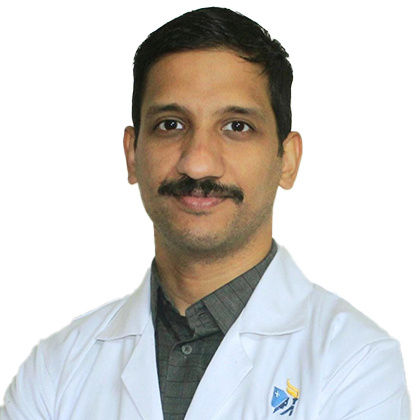
Dr. Yashwant Singh Tanwar
Orthopaedician
14 Years • MBBS, MS (Orthopedics), DNB (Orthopedics), MRCS (Lon), Limb Reconstruction Fellowship- Lecco (Italy), Cape Town (SA)
Delhi
Apollo Hospitals Indraprastha, Delhi
(25+ Patients)
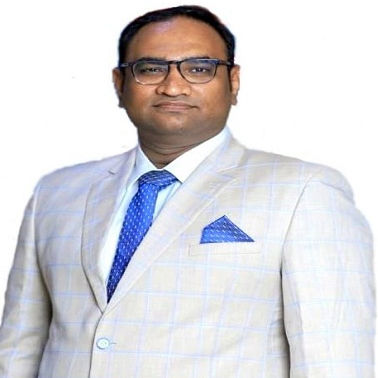
Dr Gaurav Gajanan Kanade
Orthopaedician
14 Years • MBBS, MS (Orthopaedics) FELLOWSHIP IN JOINT REPLACEMENT SURGERY (Germany/Singapore)
Mumbai
Apollo Hospitals CBD Belapur, Mumbai
Consult an Orthopeadic Specialist for the best advice

Dr.awari Uday Kumar
Orthopaedician
5 Years • MBBS, D-ORTHOPEDICS
Hyderabad
Apollo Hospitals Jubilee Hills, Hyderabad

Dr Dayakar Babu Jakkula
Orthopaedician
3 Years • MBBS, MS Ortho, FIJR, FELLOWSHIP in ARTHROPLASTY and ROBOTIC ASSISTED SURGERY.
Hyderabad
Apollo Hospitals Jubilee Hills, Hyderabad

Dr. Nallu Shanthan Koushik Reddy
Orthopaedician
9 Years • MBBS, MS(ORTHOPEDICS),FIJR,FIAS.
Hyderabad
Apollo Hospitals Jubilee Hills, Hyderabad

Dr. Yashwant Singh Tanwar
Orthopaedician
14 Years • MBBS, MS (Orthopedics), DNB (Orthopedics), MRCS (Lon), Limb Reconstruction Fellowship- Lecco (Italy), Cape Town (SA)
Delhi
Apollo Hospitals Indraprastha, Delhi
(25+ Patients)

Dr Gaurav Gajanan Kanade
Orthopaedician
14 Years • MBBS, MS (Orthopaedics) FELLOWSHIP IN JOINT REPLACEMENT SURGERY (Germany/Singapore)
Mumbai
Apollo Hospitals CBD Belapur, Mumbai
More articles from Knee pain
Frequently Asked Questions
What is the typical cost of autologous chondrocyte implantation in India?
The cost of autologous chondrocyte implantation can vary widely based on the city, hospital, surgeon's fee, and the specific technology used. It is one of the more expensive orthopaedic procedures due to the two surgeries and the complex cell culturing process. It's essential to check with your insurance provider regarding coverage.
How painful is the ACI recovery process?
Pain is managed effectively with medication immediately after surgery. The most challenging aspect is often the lengthy period of non-weight-bearing and the demanding physical therapy, not unmanageable pain. Discomfort is common but temporary.
Can ACI delay or prevent the need for a knee replacement?
Yes, that is the primary goal of this joint-preserving surgery. By effectively repairing the focal defect and restoring the joint surface, ACI aims to alleviate symptoms and halt the progression of damage that would otherwise lead to widespread arthritis and the eventual need for a knee replacement, often by many years.
What is the difference between ACI and MACI?
MACI (Matrix-Induced Autologous Chondrocyte Implantation) is a newer, advanced form of ACI. Instead of injecting liquid cells and covering them with a membrane, the lab seeds the cultured cells directly onto a collagen membrane/scaffold. This cell-seeded patch is then implanted and glued into the defect. MACI often allows for a less invasive implantation and can simplify the surgery.
Will I be able to run again after ACI surgery?
The goal of ACI is to return you to your desired level of activity. While returning to high-impact sports is possible, it is not guaranteed and takes time (often 12-18 months). Your surgeon and physiotherapist will guide you based on the healing of your graft, your strength recovery, and functional tests.


